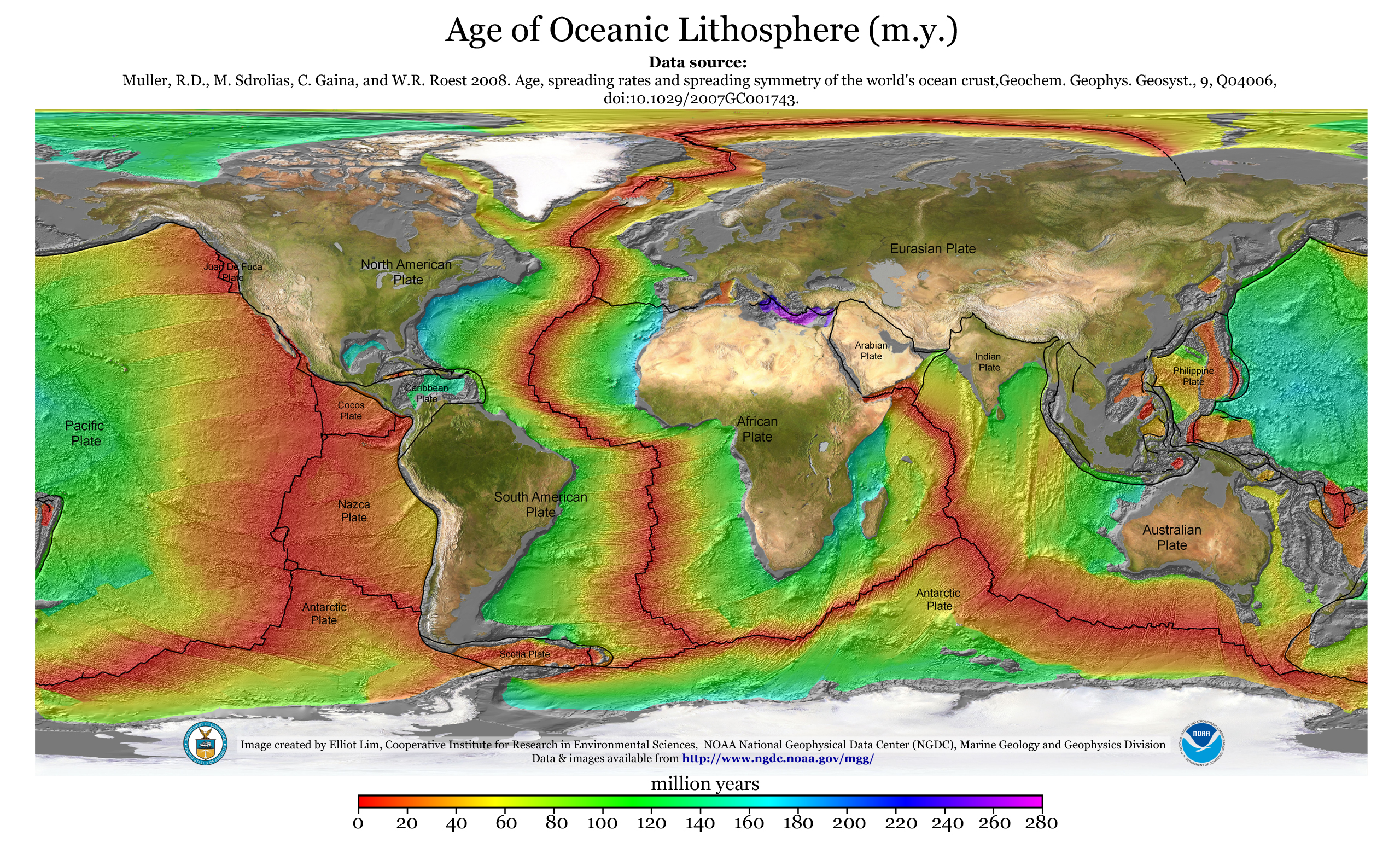|
Lithosphere
A lithosphere () is the rigid, outermost rocky shell of a terrestrial planet or natural satellite. On Earth, it is composed of the crust and the lithospheric mantle, the topmost portion of the upper mantle that behaves elastically on time scales of up to thousands of years or more. The crust and upper mantle are distinguished on the basis of chemistry and mineralogy. Earth's lithosphere Earth's lithosphere, which constitutes the hard and rigid outer vertical layer of the Earth, includes the crust and the lithospheric mantle (or mantle lithosphere), the uppermost part of the mantle that is not convecting. The layer below the lithosphere is called the asthenosphere, which is the weaker, hotter, and deeper part of the upper mantle that is able to convect. The lithosphere–asthenosphere boundary is defined by a difference in response to stress. The lithosphere remains rigid for very long periods of geologic time in which it deforms elastically and through brittle f ... [...More Info...] [...Related Items...] OR: [Wikipedia] [Google] [Baidu] |
Lithosphere–asthenosphere Boundary
The lithosphere–asthenosphere boundary (referred to as the LAB by geophysicists) represents a Mechanics, mechanical difference between layers in Structure of the Earth, Earth's inner structure. Earth's inner structure can be described both Chemical substance, chemically (Crust (geology), crust, Mantle (geology), mantle, and Core (geology), core) and mechanically. The lithosphere–asthenosphere boundary lies between Earth's cooler, rigid lithosphere and the warmer, ductile asthenosphere. The actual depth of the boundary is still a topic of debate and study, although it is known to vary according to the environment. The following overview follows the chapters in the research monograph by Irina Artemieva on "The Lithosphere". Definition The LAB is determined from the differences in the lithosphere and asthenosphere including, but not limited to, differences in grain size, chemical composition, thermal properties, and extent of Partial melting, partial melt; these are factors that a ... [...More Info...] [...Related Items...] OR: [Wikipedia] [Google] [Baidu] |
Asthenosphere
The asthenosphere () is the mechanically weak and ductile region of the upper mantle of Earth. It lies below the lithosphere, at a depth between c. below the surface, and extends as deep as . However, the lower boundary of the asthenosphere is not well defined. The asthenosphere is almost solid, but a slight amount of melting (less than 0.1% of the rock) contributes to its mechanical weakness. More extensive decompression melting of the asthenosphere takes place where it wells upwards, and this is the most important source of magma on Earth. It is the source of mid-ocean ridge basalt (MORB) and of some magmas that erupt above subduction zones or in regions of continental rifting. Characteristics The asthenosphere is a part of the upper mantle just below the lithosphere that is involved in plate tectonic movement and isostatic adjustments. It is composed of peridotite, a rock containing mostly the minerals olivine and pyroxene. The lithosphere-asthenosphere boundary ... [...More Info...] [...Related Items...] OR: [Wikipedia] [Google] [Baidu] |
Earth Cutaway Schematic-en
Earth is the third planet from the Sun and the only astronomical object known to harbor life. This is enabled by Earth being an ocean world, the only one in the Solar System sustaining liquid surface water. Almost all of Earth's water is contained in its global ocean, covering 70.8% of Earth's crust. The remaining 29.2% of Earth's crust is land, most of which is located in the form of continental landmasses within Earth's land hemisphere. Most of Earth's land is at least somewhat humid and covered by vegetation, while large sheets of ice at Earth's polar deserts retain more water than Earth's groundwater, lakes, rivers, and atmospheric water combined. Earth's crust consists of slowly moving tectonic plates, which interact to produce mountain ranges, volcanoes, and earthquakes. Earth has a liquid outer core that generates a magnetosphere capable of deflecting most of the destructive solar winds and cosmic radiation. Earth has a dynamic atmosphere, which sustains Earth' ... [...More Info...] [...Related Items...] OR: [Wikipedia] [Google] [Baidu] |

